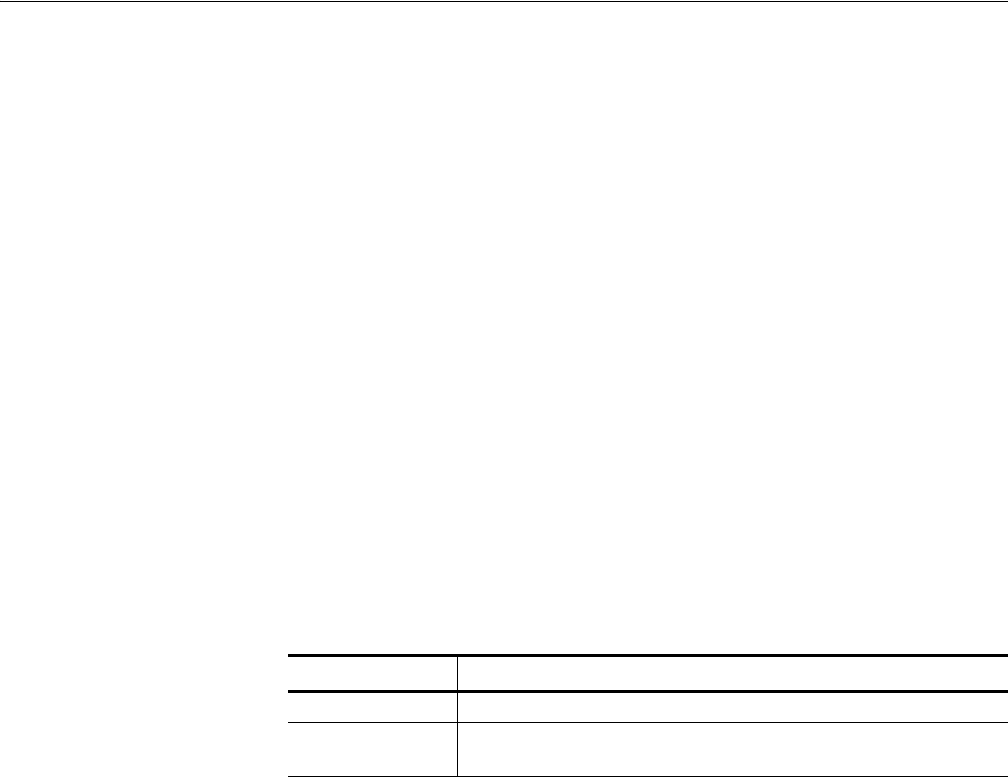User's Manual
Table Of Contents
- Title page
- Table of Contents
- General Safety Summary
- Preface
- Getting Started
- Operating Basics
- Reference
- Reference
- Menu Structures
- The Setup Menu Screen
- The Graphical Waveform Editor
- The Pattern Editor
- Quick Editing
- The Table Editor
- The Equation Editor
- The Sequence Editor
- The APPL Menu
- The UTILITY Window
- External Keyboards
- Setting General Purpose Knob Direction
- Formatting a Floppy Disk
- Displaying Disk Usage
- Screen Display Enable/Disable
- Focused Color
- Displaying Instrument Status
- Internal Clock (Date and Time)
- Resetting the Instrument
- Connecting to a GPIB Network
- Ethernet Networking
- Hardcopy
- Calibration and Diagnostics
- Upgrading the System Software
- Capturing Waveforms
- Waveform Programming Language
- Command Descriptions
- Programming Examples
- File Conversion
- File Management
- FG Mode
- Waveform Mixing Mode
- Synchronous Operation Mode (AWG710B only)
- Appendices
- Appendix A: Specifications (AWG710B)
- Appendix A: Specifications (AWG710)
- Appendix B: Performance Verification (AWG710B)
- Conventions
- Self Tests
- Performance Tests
- Operating Mode Tests
- Amplitude and Offset Accuracy Tests (Normal Out), (except option 02)
- Amplitude, Offset Accuracy and Rise Time Tests (Direct DA Out), (except option 02)
- Amplitude, Offset Accuracy and Rise Time Tests (for option 02)
- Pulse Response Tests (Normal Out), (except option 02)
- Trigger Input Tests
- Event Input and Enhanced Mode Tests
- External Clock Input and VCO Out Output Tests
- VCO OUT Output Frequency and 10 MHz Reference Input Tests
- Marker Output Tests
- Synchronous Operation Tests
- Appendix B: Performance Verification (AWG710)
- Conventions
- Self Tests
- Performance Tests
- Operating Mode Tests
- Amplitude and Offset Accuracy Tests (Normal Out), (except option 02)
- Amplitude, Offset Accuracy and Rise Time Tests (Direct DA Out), (except option 02)
- Amplitude, Offset Accuracy and Rise Time Tests (for option 02)
- Pulse Response Tests (Normal Out), (except option 02)
- Trigger Input Tests
- Event Input and Enhanced Mode Tests
- 1/4 Clock Frequency and 10 MHz Reference Input Tests
- Marker Output Tests
- Appendix C: Inspection and Cleaning
- Appendix D: Sample Waveforms
- Appendix E: File Transfer Interface Outline
- Appendix F: Miscellaneous
- Appendix G: Sequence File Text Format
- Index

The Graphical Waveform Editor
AWG710&AWG710B Arbitrary Waveform Generator User Manual 3-77
2. Push Tools (bottom)!Convolution... (pop–up)!OK (side). The
Convolution dialog box appears.
3. Select the second waveform in the With field.
4. Select either Off or On in the Treat waveform as periodic field.
5. Push the OK side button to generate the result of convolution of the two
waveforms.
Correlation...
The Correlation... command performs correlation between the data points in the
active window and the data points in a nonactive window, starting at data point 0.
The results are displayed in a third window. There are no restrictions on the data
lengths of the two waveforms. For markers, the value of current window is copied.
If one or three windows are open, the operation will not work.
Refer to Correlation on page F-5 for more information on correlation.
Correlation Dialog Box. The Correlation dialog box lets you set the second
waveform for the operation and the Periodic On/Off switch. Table 3-16 describes
the Correlation dialog box parameters.
Do the following steps to perform a correlation math operation between two
waveforms:
1. If more than one window is open, select the source waveform as follows:
Push Window (bottom)!Window1, Window2, or Window3 (side).
2. Push Tools (bottom)!Correlation... (pop–up)!OK (side).
The Correlation dialog box appears.
3. Select the second waveform in the With field.
4. Select either Off or On in the Treat waveform as periodic field.
5. Push the OK side button to generate the result of correlation of the two
waveforms.
Table 3-16: Correlation dialog box parameters
Parameters Descriptions
With Specifies the second waveform for the operation.
Treat waveform
periodic
Specifies whether the waveform must be regarded as periodic during
calculation.










